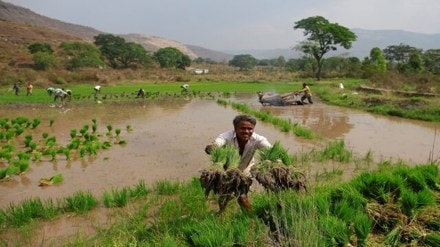The uptick in India’s rural economy—with gross valued added in agriculture, forestry, and fishing registering average growth of 4.4% in the five years to FY25 and 3.7% in Q1FY26—is good news for India’s growth story. Higher farm incomes from larger food grain production due to a run of normal and above-normal southwest monsoons, barring 2023-24, and robust prices have led to more demand for fast-moving consumer goods (FMCG) and tractors which favourably impact overall industrial production with a lag. Although US President Donald Trump’s punitive 50% tariffs on India are bound to cast a shadow over rural sentiments, the fact that 72.8% of rural households in September still expect their incomes to increase in the next year—which is down from 75% in July—according to a bi-monthly survey conducted by the National Bank for Agriculture and Rural Development are good tidings for Bharat. There are also welcome shifts in borrowing behaviour with 54.5% of rural households reporting relying solely on formal sources of credit—which is the highest since these surveys began.
Consumption and Mechanisation Drive Growth
The signs of vibrancy in the rural economy are reflected in higher FMCG volume sales growth of 8.4% in Q1FY26. Consumption has definitely been boosted by an above-normal southwest monsoon this year. Till August this fiscal, domestic sales of tractors rose by 11.6% when compared to the corresponding period in FY25, which clearly points to upbeat farm sentiments. While tractors typically are purchased by prosperous farmers with relatively larger landholdings, there are signs of growing mechanisation also among farmers with smaller land holdings. The proximate factors relate to the rising costs of maintaining oxen and bullocks.
Domestic tractors and farm machinery sales are likely to be further boosted by reductions in the goods and services tax (GST) as prices will drop by 7-13%. The current sales trend indicates that tractor off-take might well cross 1 million units for the first time in FY26. The faster pace of mechanisation in the countryside lowers costs of cultivation and boosts farm output. Supporting this bullish scenario is the prospect for double-digit growth in credit to agriculture this fiscal.
Policy Imperatives and Climate Resilience
The positive momentum in rural India is also reflected in official expectations that a growth of 5% is feasible—higher than the earlier long-term trend of 3%—and vital for the country becoming a more developed nation by 2047. All of this entails prioritisation of reforms in this sector that supports half the nation’s workforce. While a run of good monsoons has supported brisker activity in the countryside, it has also resulted in devastating flooding, landslides, and other disruptions, which have been most felt in northern states like Punjab in which 0.4 million hectares out of the 3.2 million hectares of crop area has been affected. West Bengal, too, has been severely impacted. The need is to step-up agri R&D that will enable farmers to better cope with climate change. In the coming rabi season, there are potential risks to crops amid expectations of a return of La Niña which is associated with increased rainfall and colder temperatures. All of this entails improvements in weather forecasting and development of climate-resilient seed varieties. The policy imperative must be to ensure that rural India does not remain hostage to the vagaries of the southwest monsoon by building more irrigation facilities especially in peninsular India.
